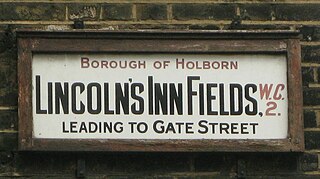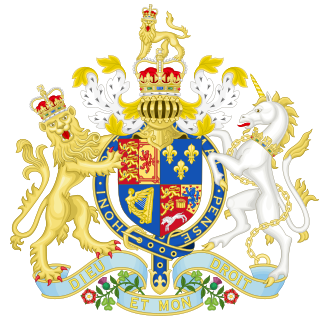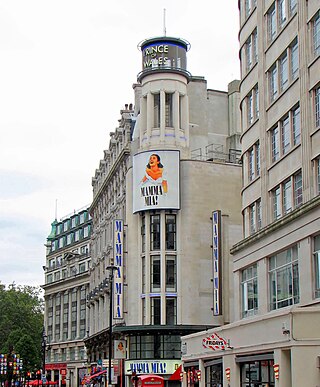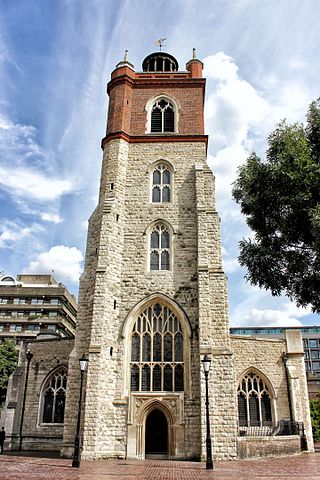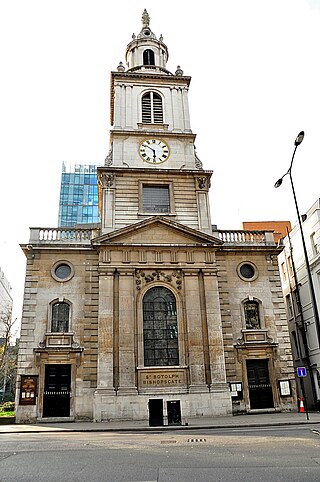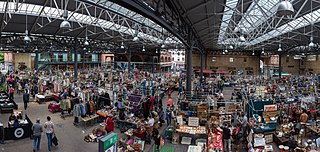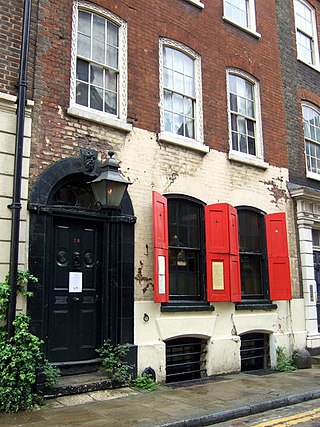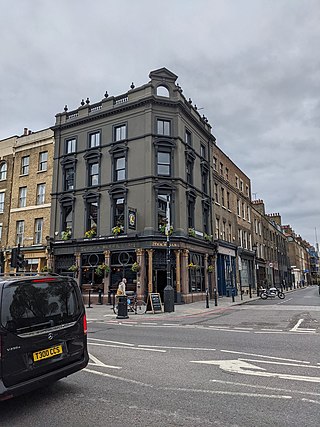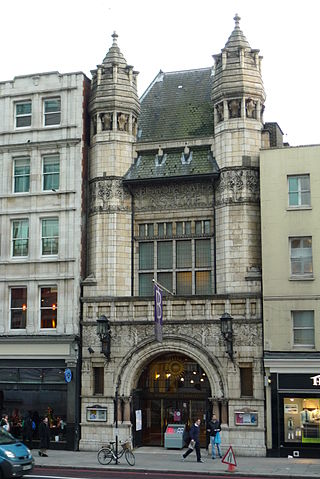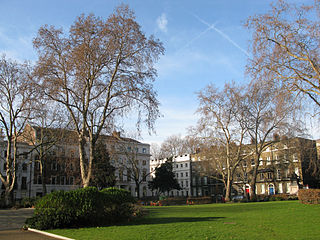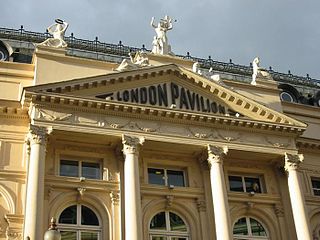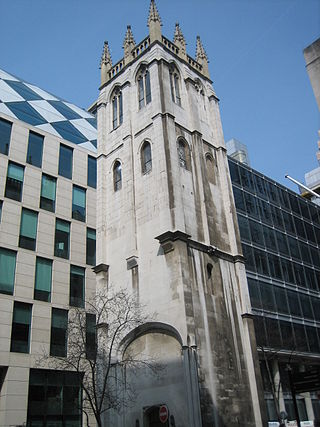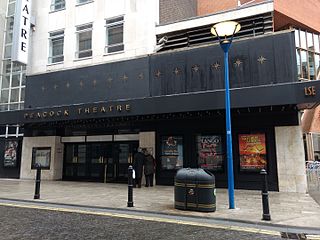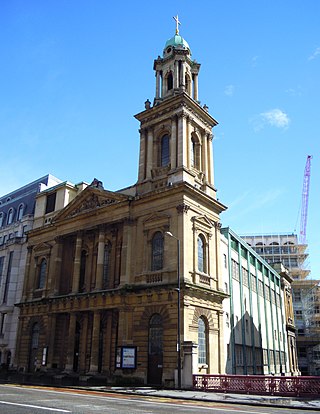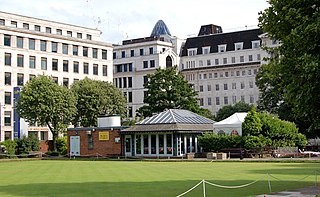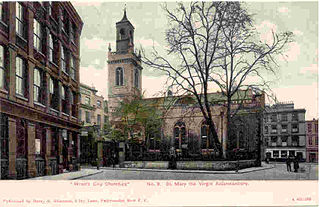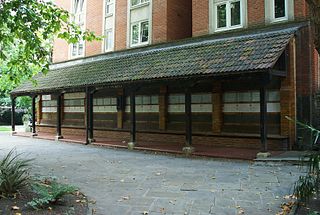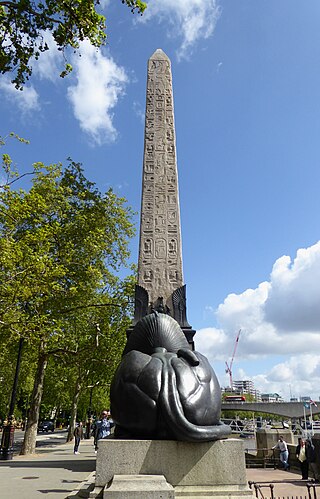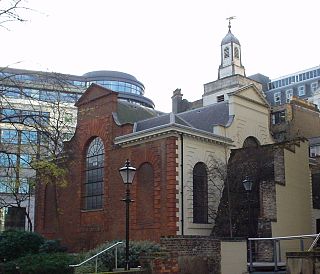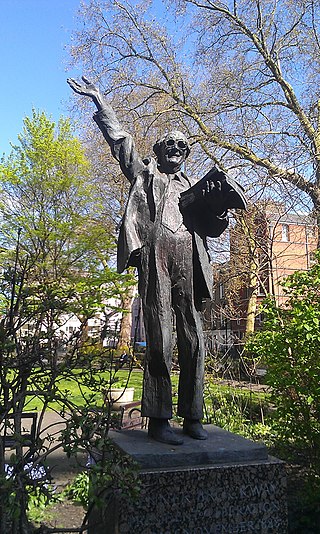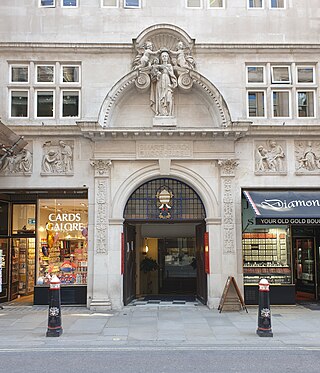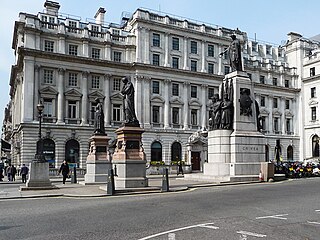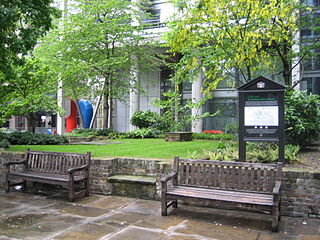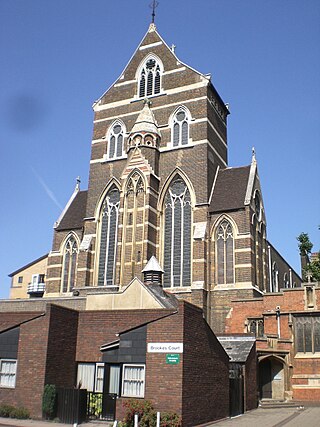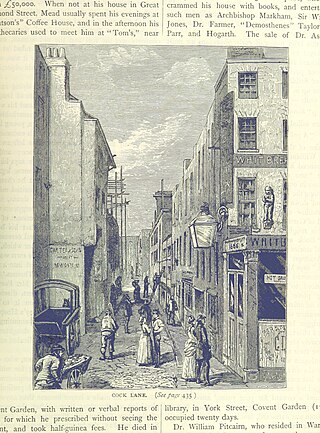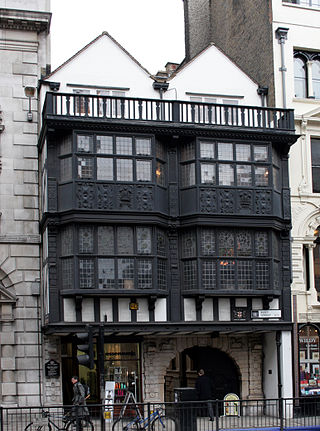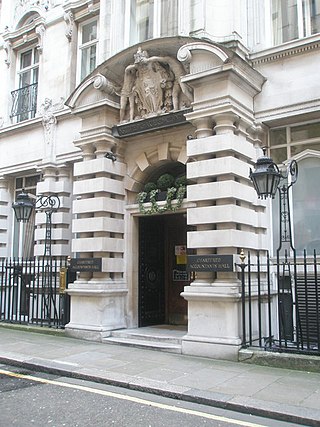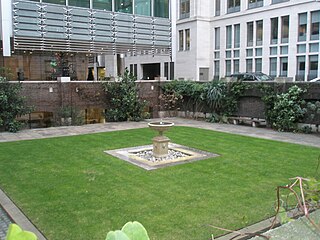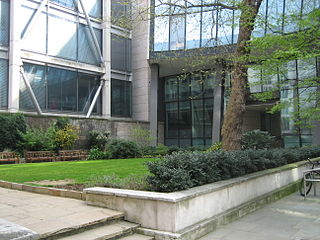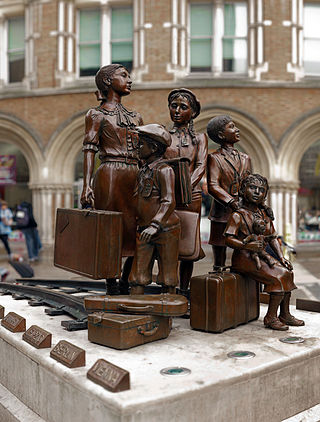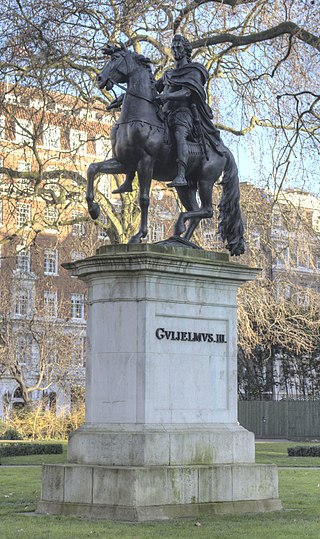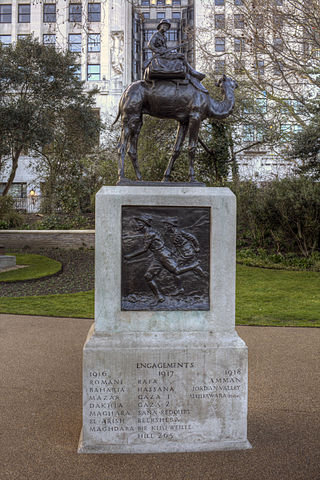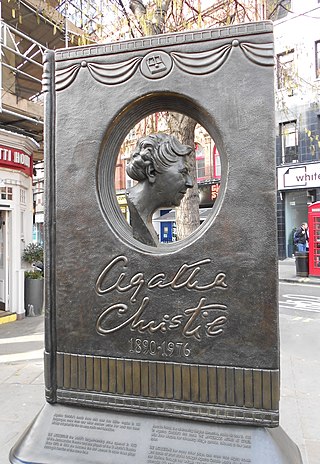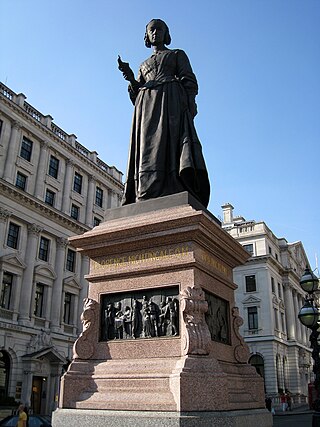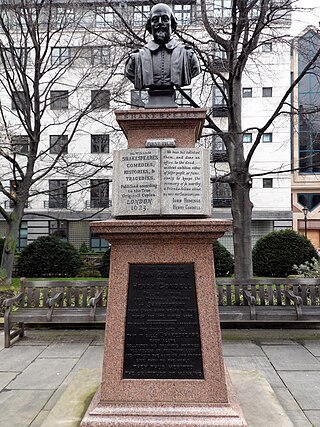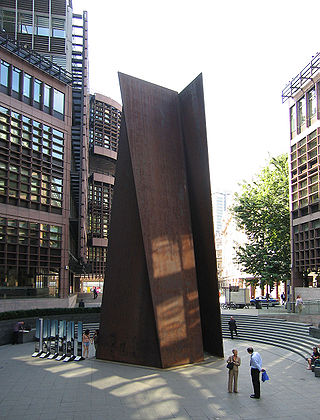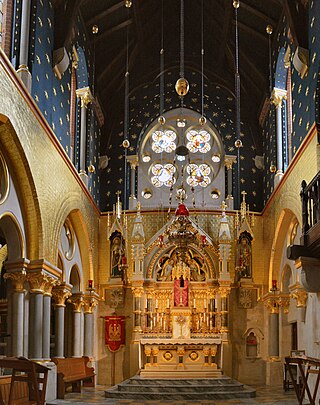56 Sights in City of London, United Kingdom (with Map and Images)
Legend
Welcome to your journey through the most beautiful sights in City of London, United Kingdom! Whether you want to discover the city's historical treasures or experience its modern highlights, you'll find everything your heart desires here. Be inspired by our selection and plan your unforgettable adventure in City of London. Dive into the diversity of this fascinating city and discover everything it has to offer.
Sightseeing Tours in City of LondonActivities in City of London1. Lincoln's Inn
The Honourable Society of Lincoln's Inn, commonly known as Lincoln's Inn, is one of the four Inns of Court in London. To be called to the bar in order to practise as a barrister in England and Wales, an individual must belong to one of these inns. The other three are Middle Temple, Inner Temple, and Gray's Inn.
2. Central Criminal Court
The Central Criminal Court of England and Wales, commonly referred to as the Old Bailey after the street on which it stands, is a criminal court building in central London, one of several that house the Crown Court of England and Wales. The street outside follows the route of the ancient wall around the City of London, which was part of the fortification's bailey, hence the metonymic name.
3. Theatre Royal Haymarket
The Theatre Royal Haymarket is a West End theatre on Haymarket in the City of Westminster which dates back to 1720, making it the third-oldest London playhouse still in use. Samuel Foote acquired the lease in 1747, and in 1766 he gained a royal patent to play legitimate drama in the summer months. The original building was a little further north in the same street. It has been at its current location since 1821, when it was redesigned by John Nash. It is a Grade I listed building, with a seating capacity of 888. The freehold of the theatre is owned by the Crown Estate.
Wikipedia: Theatre Royal Haymarket (EN), Twitter, Facebook, Instagram, Website, Heritage Website
4. Chatham House (The Royal Institute of International Affairs)
The Royal Institute of International Affairs, commonly known as Chatham House, is a British think tank based in London, England. Its stated mission is "to help governments and societies build a sustainably secure, prosperous, and just world". It is the originator of the Chatham House Rule.
5. Heron Tower
Salesforce Tower, 110 Bishopsgate is a commercial skyscraper in London. It stands 230 metres (755 ft) tall including its 28-metre (92 ft) mast making it the second tallest building in the City of London financial district and the fifth tallest in Greater London and the United Kingdom, after the Shard in Southwark and One Canada Square at Canary Wharf. 110 Bishopsgate is located on Bishopsgate and is bordered by Camomile Street, Outwich Street and Houndsditch.
6. St Bartholomew-The Great
The Priory Church of St Bartholomew the Great, sometimes abbreviated to St-Barts-the-Great, is a mediaeval church in the Church of England's Diocese of London located in Smithfield within the City of London. The building was founded as an Augustinian priory in 1123. It adjoins St Bartholomew's Hospital of the same foundation.
Wikipedia: St Bartholomew-the-Great (EN), Website, Heritage Website
7. White's Gentlemen's club
White's is a gentlemen's club in St James's, London. Founded in 1693 as a hot chocolate shop in Mayfair, it is London's oldest club and therefore the oldest private members' club in the world. It moved to its current premises on St James's Street in 1778.
8. St James's Church
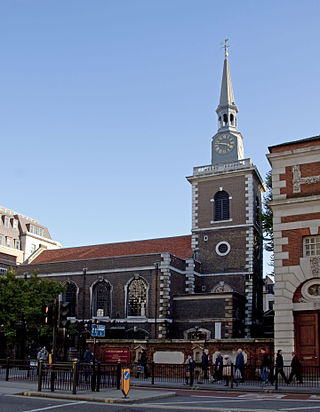
St James's Church, Piccadilly, also known as St James's Church, Westminster, and St James-in-the-Fields, is an Anglican church on Piccadilly in the centre of London, England. The church was designed and built by Sir Christopher Wren.
Wikipedia: St James's Church, Piccadilly (EN), Website, Heritage Website
9. Duke of York's
The Duke of York's Theatre is a West End theatre in St Martin's Lane, in the City of Westminster, London. It was built for Frank Wyatt and his wife, Violet Melnotte, who retained ownership of the theatre until her death in 1935. Designed by the architect Walter Emden, it opened on 10 September 1892 as the Trafalgar Square Theatre, and was renamed Trafalgar Theatre in 1894. The following year, it became the Duke of York's to honour the future King George V.
10. Dominion Theatre
The Dominion Theatre is a West End theatre and former cinema on Tottenham Court Road, close to St Giles Circus and Centre Point, in the London Borough of Camden. Planned as primarily a musical theatre, it opened in 1929, but the following year became a cinema—it hosted the London premiere of Charlie Chaplin's City Lights with Chaplin in attendance—and in 1933 after liquidation of the controlling company was sold to Gaumont cinema chain, which later became part of the Rank Organisation. It was a major premiere cinema until the 1970s, when it began to host live concerts.
11. Garrick
The Garrick Theatre is a West End theatre, located in Charing Cross Road, in the City of Westminster, named after the stage actor David Garrick. It opened in 1889 with The Profligate, a play by Arthur Wing Pinero, and another Pinero play, The Notorious Mrs. Ebbsmith, was an early success at the theatre. In its early years, the Garrick appears to have specialised in the performance of melodrama. The theatre later became associated with comedies, including No Sex Please, We're British, which played for four years from 1982 to 1986.
12. Guildhall
Guildhall is a municipal building in the Moorgate area of the City of London, England. It is off Gresham and Basinghall streets, in the wards of Bassishaw and Cheap. The current building dates from the 15th century; however documentary evidence suggests that a guildhall had existed at the site since at least the early 12th century. The building has been used as a town hall for several hundred years, and is still the ceremonial and administrative centre of the City of London and its Corporation. It should not be confused with London's City Hall, the administrative centre for Greater London. The term "Guildhall" refers both to the whole building and to its main room, which is a medieval great hall. It is a Grade I-listed building.
13. Sir John Soane's Museum
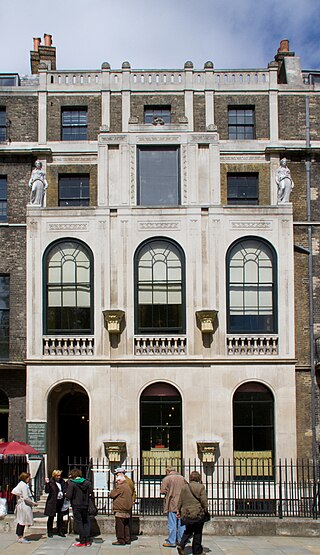
Sir John Soane's Museum is a house museum, located next to Lincoln's Inn Fields in Holborn, London, which was formerly the home of neo-classical architect John Soane. It holds many drawings and architectural models of Soane's projects and a large collection of paintings, sculptures, drawings, and antiquities that he acquired over many years. The museum was established during Soane's own lifetime by a private Act of Parliament in 1833, which took effect on his death in 1837. Soane engaged in this lengthy parliamentary campaign in order to disinherit his son, whom he disliked intensely. The act stipulated that on Soane's death, his house and collections would pass into the care of a board of trustees acting on behalf of the nation, and that they would be preserved as nearly as possible exactly in the state they were at his death. The museum's trustees remained completely independent, relying only on Soane's original endowment, until 1947. Since then, the museum has received an annual Grant-in-Aid from the British Government via the Department for Culture, Media and Sport.
14. Freemasons' Hall
Freemasons' Hall in London is the headquarters of the United Grand Lodge of England and the Supreme Grand Chapter of Royal Arch Masons of England, as well as being a meeting place for many Masonic Lodges in the London area. It is located in Great Queen Street between Holborn and Covent Garden and has been a Masonic meeting place since 1775.
15. Maughan Library (King's College London)
The Maughan Library is the main university research library of King's College London, forming part of the Strand Campus. A 19th-century neo-Gothic building located on Chancery Lane in the City of London, it was formerly the home to the headquarters of the Public Record Office, known as the "strong-box of the Empire", and was acquired by the university in 2001. Following a £35m renovation designed by Gaunt Francis Architects, the Maughan is the largest new university library in the United Kingdom since World War II.
16. Lincoln's Inn Fields
Lincoln's Inn Fields is the largest public square in London. It was laid out in the 1630s under the initiative of the speculative builder and contractor William Newton, "the first in a long series of entrepreneurs who took a hand in developing London", as Sir Nikolaus Pevsner observes. The original plan for "laying out and planting" these fields, drawn by the hand of Inigo Jones, was said still to be seen in Lord Pembroke's collection at Wilton House in the 19th century, but its location is now unknown. The grounds, which had remained private property, were acquired by London County Council in 1895 and opened to the public by its chairman, Sir John Hutton, the same year. The square is today managed by the London Borough of Camden and forms part of the southern boundary of that borough with the City of Westminster.
17. St. Sepulchre's Church
Holy Sepulchre London, formerly and in some official uses Saint Sepulchre-without-Newgate, is the largest Anglican parish church in the City of London. It stands on the north side of Holborn Viaduct across a crossroads from the Old Bailey, and its parish takes in Smithfield Market. During medieval times, the site lay outside ("without") the city wall, west of the Newgate.
Wikipedia: St Sepulchre-without-Newgate (EN), Website, Heritage Website
18. Christ Church Spitalfields
Christ Church Spitalfields is an Anglican church built between 1714 and 1729 to a design by Nicholas Hawksmoor. On Commercial Street in the East End and in today's Central London it is in the London Borough of Tower Hamlets, on its western border facing the City of London, it was one of the first of the so-called "Commissioners' Churches" built for the Commission for Building Fifty New Churches, which had been established by an act of parliament in 1711.
Wikipedia: Christ Church, Spitalfields (EN), Website, Heritage Website
19. Prince of Wales Theatre
The Prince of Wales Theatre is a West End theatre in Coventry Street, near Leicester Square in London. It was established in 1884 and rebuilt in 1937, and extensively refurbished in 2004 by Sir Cameron Mackintosh, its current owner. The theatre should not be confused with the former Scala Theatre in London that was known as the Prince of Wales Royal Theatre or Prince of Wales's Theatre from 1865 until its demolition in 1903.
20. St George's Bloomsbury
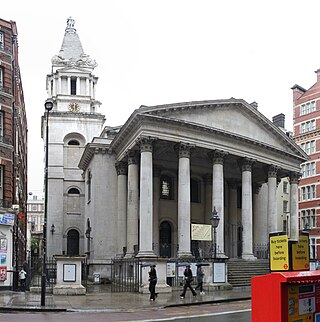
St George's, Bloomsbury, is a parish church in Bloomsbury, London Borough of Camden, United Kingdom. It was designed by Nicholas Hawksmoor and consecrated in 1730. The church crypt houses the Museum of Comedy.
Wikipedia: St George's, Bloomsbury (EN), Website, Heritage Website
21. St-Giles-without-Cripplegate
St Giles-without-Cripplegate is an Anglican church in the City of London, located on Fore Street within the modern Barbican complex. When built it stood without the city wall, near the Cripplegate. The church is dedicated to St Giles, patron saint of handicapped and infirm people of many different kinds. It is one of the few medieval churches left in the City of London, having survived the Great Fire of 1666.
Wikipedia: St Giles-without-Cripplegate (EN), Heritage Website
22. St Botolph-without-Bishopsgate
St Botolph-without-Bishopsgate is a Church of England church in the Bishopsgate Without area of the City of London, and also, by virtue of lying outside the city's eastern walls, part of London's East End.
Wikipedia: St Botolph-without-Bishopsgate (EN), Heritage Website
23. Old Spitalfields Market
Old Spitalfields Market is a covered market in Spitalfields, London. There has been a market on the site for over 350 years. In 1991 it gave its name to New Spitalfields Market in Leyton, where fruit and vegetables are now traded. In 2005, a regeneration programme resulted in the new public spaces: Bishops Square and Crispin Place, which are now part of the modern Spitalfields Market. A range of public markets runs daily, with independent local stores and restaurants - as well as new office developments.
24. Dennis Severs' House
Dennis Severs' House is a historical tourist attraction in Folgate Street, London. Created by Dennis Severs, who owned and lived in the house until his death, it is intended as a "historical imagination" of what life would have been like inside for a family of Huguenot silk weavers. It is a Grade II listed Georgian terraced house in Spitalfields in the East End, Central London, England. From 1979 to 1999 it was lived in by Dennis Severs, who gradually recreated the rooms as a time capsule in the style of former centuries. Severs' friend Dan Cruickshank said: "It was never meant to be an accurate historical creation of a specific moment – it was an evocation of a world. It was essentially a theatre set."
25. The Ten Bells
The Ten Bells is a public house at the corner of Commercial Street and Fournier Street in Spitalfields in the East End of London. It is sometimes noted for its supposed association with at least two victims of Jack the Ripper: Annie Chapman and Mary Jane Kelly.
26. Bishopsgate Institute
Bishopsgate Institute is a cultural institute in the Bishopsgate area of the City of London, located in the East End of London near Spitalfields and Shoreditch. The institute was established in 1895. It offers a cultural events programme, courses for adults, historic library and archive collections and community programme.
27. Bloomsbury Square
Bloomsbury Square is a garden square in Bloomsbury, in the London Borough of Camden, London. Developed in the late 17th century, it was initially known as Southampton Square and was one of the earliest London squares. By the early 19th century, Bedford House along the north of the square had been demolished and replaced with terraced housing designed by James Burton.
28. St Bartholomew The Less
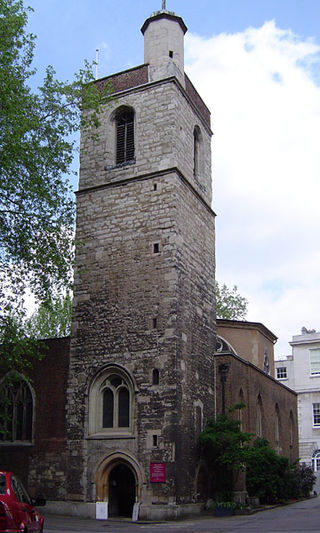
St Bartholomew the Less is an Anglican church in the City of London, associated with St Bartholomew's Hospital, within whose precincts it stands. Once a parish church, it has, since 1 June 2015, been a chapel of ease in the parish of St Bartholomew the Great.
Wikipedia: St Bartholomew-the-Less (EN), Website, Heritage Website
29. London Pavillion
The London Pavilion is a building on the corner of Shaftesbury Avenue and Coventry Street on the north-east side of Piccadilly Circus in London. It is currently a shopping arcade and part of the Trocadero Centre.
30. St Alban Church Tower
St Alban's was a church in Wood Street, City of London. It was dedicated to Saint Alban. Of medieval origin, it was rebuilt in 1634, destroyed in the Great Fire of London in 1666, and rebuilt, this time to a Gothic design by Sir Christopher Wren. It was severely damaged by bombing during the Second World War and the ruins cleared, leaving only the tower.
31. Peacock Theatre
The Peacock Theatre is a West End theatre in the City of Westminster, located in Portugal Street, near Aldwych. The 999-seat house is owned by, and comprises part of the London School of Economics and Political Science campus, who use the theatre for lectures, public talks, conferences, political speeches and open days.
32. The City Temple
The City Temple is a Nonconformist church on Holborn Viaduct in London. The current minister is Rodney Woods. The church is part of the Thames North Synod of the United Reformed Church and is a member of the Evangelical Alliance.
33. Finsbury Square
Finsbury Square is a 0.7-hectare (1.7-acre) square in Finsbury in central London which includes a six-rink grass bowling green. It was developed in 1777 on the site of a previous area of green space to the north of the City of London known as Finsbury Fields, in the parish of St Luke's and near Moorfields. It is sited on the east side of City Road, opposite the east side of Bunhill Fields. It is approximately 200m north of Moorgate station, 300m north-west of Liverpool Street station and 400m south of Old Street station. Nearby locations are Finsbury Circus and Finsbury Pavement. Named after it, but several miles away, are Finsbury Park and its eponymous neighbourhood. The centre of the square includes an underground NCP Car Park and two disused petrol stations, also owned by NCP for above-ground commercial parking. Finsbury Square is served by bus routes 21, 43, 141 and 214.
34. St Mary Aldermanbury
St Mary Aldermanbury was a parish church in the City of London first mentioned in 1181 and destroyed by the Great Fire of London in 1666. Rebuilt in Portland stone by Christopher Wren, it was again gutted by the Blitz in 1940, leaving only the walls standing. These stones were transported to Fulton, Missouri in 1966, by the residents of that town, and rebuilt in the grounds of Westminster College as a memorial to Winston Churchill. Churchill had made his Sinews of Peace, "Iron Curtain" speech in the Westminster College Gymnasium in 1946.
35. Memorial to Heroic Self Sacrifice
The Memorial to Heroic Self-Sacrifice is a public monument in Postman's Park in the City of London, commemorating ordinary people who died saving the lives of others and who might otherwise have been forgotten. It was first proposed by painter and sculptor George Frederic Watts in 1887, to commemorate the Golden Jubilee of Queen Victoria. The scheme was not accepted at that time, and in 1898 Watts was approached by Henry Gamble, vicar of St Botolph's Aldersgate church. Postman's Park was built on the church's former churchyard, and the church was at that time trying to raise funds to secure its future; Gamble felt that Watts's proposed memorial would raise the profile of the park. The memorial was unveiled in an unfinished state in 1900, consisting of a 50-foot (15 m) wooden loggia designed by Ernest George, sheltering a wall with space for 120 ceramic memorial tiles to be designed and made by William De Morgan. At the time of opening, only four of the memorial tiles were in place. Watts died in 1904, and his widow Mary Watts took over the running of the project.
36. Cleopatra's Needle
Cleopatra's Needle in London is one of a pair of obelisks, together named Cleopatra's Needles, that were moved from the ruins of the Caesareum of Alexandria, in Egypt, in the 19th century. Inscribed by Thutmose III and later Ramesses II of the Egyptian New Kingdom, the obelisk was moved in 12 BC to Alexandria, where it remained for over 1,800 years.
Wikipedia: Cleopatra's Needle, London (EN), Heritage Website
37. St. Anne and St. Agnes
St Anne and St Agnes is a church located at Gresham Street in the City of London, near the Barbican. While St Anne's is an Anglican foundation, from 1966 to 2013 it was let to a congregation of the Lutheran Church in Great Britain.
38. Red Lion Square
Red Lion Square is a small square in Holborn, London. The square was laid out in 1684 by Nicholas Barbon, taking its name from the Red Lion Inn. According to some sources, the bodies of three regicides—Oliver Cromwell, John Bradshaw and Henry Ireton—were placed in a pit on the site of the square.
39. Catholic Church of St Mary, Moorfields
St Mary Moorfields is a Roman Catholic church in Eldon Street near Moorgate, on a site previously known as Moorfields. It is the only Catholic church in the City of London. Prior to a 1994 boundary change, the church was in the Borough of Hackney, such that there were no Catholic churches in the City.
40. Crimean War Memorial
The Guards Crimean War Memorial is a Grade II listed memorial in St James's, London, that commemorates the Allied victory in the Crimean War of 1853–56. It is located on Waterloo Place, at the junction of Regent Street and Pall Mall, approximately one-quarter of the way from the Duke of York Column to Piccadilly Circus.
41. St Olave Silver Street
St Olave's Church, Silver Street was a church on the south side of Silver Street, off Wood Street in the Aldersgate ward of the City of London. It was dedicated to St Olaf, a Norwegian Christian ally of the English king Ethelred II. The church was destroyed by the Great Fire of London in 1666 and not rebuilt.
42. St Alban the Martyr
St Alban's Church, Holborn, is a Church of England parish church in Holborn, central London, for a time becoming one of two churches of its parish which retains the name and St Peter's Saffron Hill to serve the mixed-use zone, notable for jewel-setting and for law firms. It has been Grade II* listed since 1951. This land is commonly – other than mainly to state Holborn, meaning part of Holborn – called Hatton Garden. St Peter's church is defunct, rationalising the number of churches in line with population changes of the district.
Wikipedia: St Alban's Church, Holborn (EN), Website, Url, Heritage Website
43. Golden Boy of Pye Corner
The Golden Boy of Pye Corner is a small late-17th-century monument located on the corner of Giltspur Street and Cock Lane in Smithfield, central London. It marks the spot where the 1666 Great Fire of London was stopped, whereas the Monument indicates the place where it started. The statue of a naked boy is made of wood and is covered with gold; the figure was formerly winged. The late 19th-century building that incorporates it is a Grade II listed building but listed only for the figure.
44. Prince Henry's Room
Prince Henry's Room is situated on the first floor at the front of No. 17 Fleet Street, London. The house is one of the few surviving buildings in the City of London dating from before the Great Fire of London in 1666. It is a Grade II* listed building.
45. Institute of Chartered Accountants in England and Wales
Chartered Accountants' Hall is a Grade II* listed building located at 1 Moorgate Place in the City of London. It is the headquarters of the Institute of Chartered Accountants in England & Wales (ICAEW). The Hall is one of the richest examples of late Victorian architecture in the City and has been praised for its seamless integration of sculpture.
Wikipedia: Chartered Accountants' Hall (EN), Heritage Website
46. St John Zachary
St John Zachary was a church, first mentioned in official records in 1181, within the City of London, England, on the north side of Gresham Street, Aldersgate. Its vicar from 25 May 1424 to an unknown date was William Byngham, the founder of England's first teacher training college. It was destroyed in the Great Fire of London in 1666 and not rebuilt, with its parish being united with that of St Anne and St Agnes by Act of Parliament in 1670 –an arrangement that lasted until the 20th century. Its site is now a garden, first made by the fire watchers in 1941. Partial records survive at IGI.
47. The Royal Fusiliers
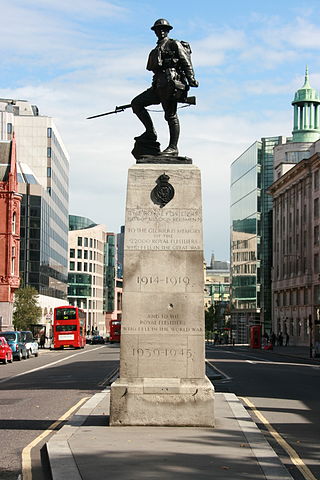
The Royal Fusiliers War Memorial is a memorial in London, dedicated to the members of the Royal Fusiliers killed in the World Wars, Russian Civil War and subsequent conflicts, along with members of a number of London Regiment battalions killed in the First World War. It consists of a bronze statue on a 16.5 feet (5.0 m) pedestal made of Portland stone.
Wikipedia: Royal Fusiliers War Memorial (EN), Heritage Website
48. St Mary Staining
St. Mary Staining was a parish church in Oat Lane, northeast of St. Paul's Cathedral, in the City of London. First recorded in the 12th century, it was destroyed in the Great Fire of London in 1666 and not rebuilt.
49. Kindertransport – The Arrival
Kindertransport – The Arrival is an outdoor bronze memorial sculpture by Frank Meisler, located in the forecourt of Liverpool Street station in London, United Kingdom. It commemorates the 10,000 Jewish children who escaped Nazi persecution and arrived at the station during 1938–1939, whose parents were forced to take the decision to send them to safety in the UK. Most of the children never saw their parents again, as their parents were subsequently killed in concentration camps, although some were reunited. The memorial was installed in September 2006, replacing Flor Kent's bronze Für Das Kind, which was installed in 2003. It was commissioned by World Jewish Relief and the Association of Jewish Refugees (AJR).
50. William III
The equestrian statue of William III by John Bacon Junior stands in St James's Square in central London. It is modelled on an earlier statue of the king by John Michael Rysbrack in Queen Square, Bristol. Funding for the London statue was provided in the will of Samuel Travers, M.P., dated 1724, but nothing was done to progress the plan for a further seventy years. A design for the monument was drawn up in 1794 by Bacon's father, John Bacon Senior, but this was not executed and the commission passed to Bacon Jr., under whose direction the statue was finally erected in 1808. The statue is a Grade I listed structure.
Wikipedia: Equestrian statue of William III, London (EN), Heritage Website
51. Imperial Camel Corps Memorial
The Imperial Camel Corps Memorial is an outdoor sculpture commemorating the Imperial Camel Corps, located in Victoria Embankment Gardens, on the Thames Embankment to the east of Charing Cross station, in London, England. The unit of mounted infantry was created in December 1916 from troops that had served in the Gallipoli campaign in the Dardanelles.
52. Agatha Christie Memorial
The Agatha Christie Memorial is a memorial to author and playwright Agatha Christie, located at the intersection of Cranbourn Street and Great Newport Street by St Martin's Cross near Covent Garden, in London, United Kingdom.
53. Florence Nightingale the 'Lady with the Lamp'
The statue of Florence Nightingale is an outdoor Grade II-listed sculpture in London, United Kingdom. It was sculpted in 1915 by Arthur George Walker, and is a subsidiary part of the Guards Crimean War Memorial.
54. Heminge & Condell memorial
The John Heminges and Henry Condell Memorial is a memorial to the actors John Heminges and Henry Condell – the editors of William Shakespeare's First Folio, published in 1623 – in the former churchyard of St Mary Aldermanbury on Love Lane, London EC2. The memorial is made from pink granite and is topped with a bust of Shakespeare by C. J. Allen, dated 1895.
55. Fulcrum
Fulcrum is a large sculpture by American artist Richard Serra installed in 1987 near the western entrance to Liverpool Street station, London, as part of the Broadgate development. The sculpture consists of five pieces of Cor-Ten steel, and is approximately 55 feet (17 m) tall. Deyan Sudjic, director of the Design Museum, has called it one of London's "design icons".
56. Corpus Christi Catholic Church
Corpus Christi Roman Catholic Church, Maiden Lane, is a Roman Catholic church in Maiden Lane, Covent Garden, in the Westminster City Council area of London, England. The church building, in Early English Gothic style, is grade II listed and was designed by F. H. Pownall; it was “specifically devoted to the adoration of the Blessed Sacrament.”
Wikipedia: Corpus Christi Roman Catholic Church, Maiden Lane (EN), Website, Heritage Website
Share
How likely are you to recommend us?
Disclaimer Please be aware of your surroundings and do not enter private property. We are not liable for any damages that occur during the tours.
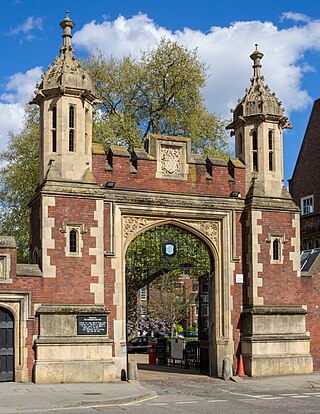
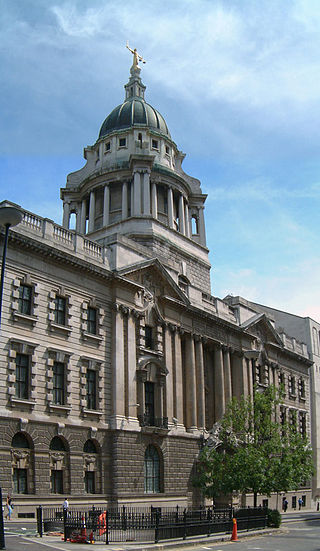
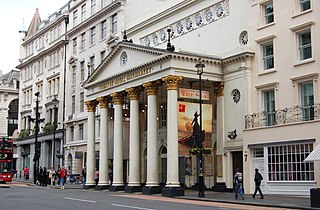
.jpg)

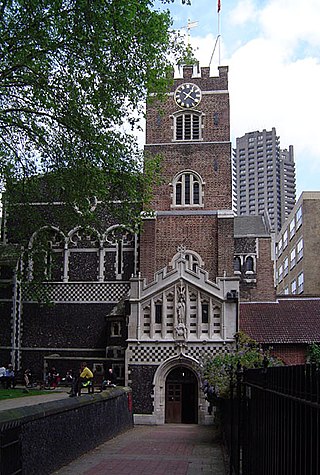
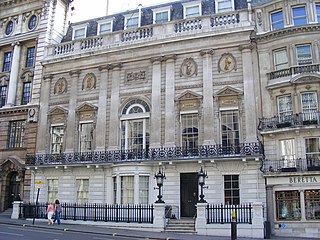
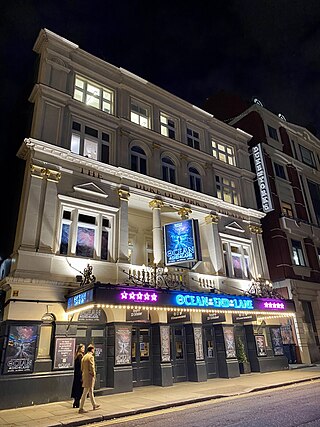
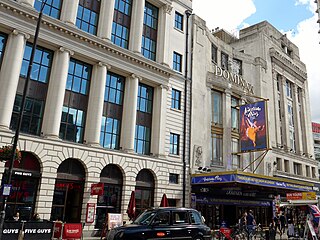
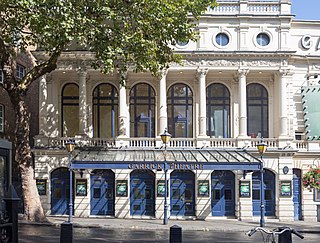
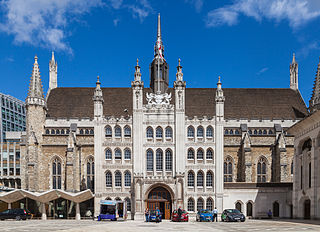
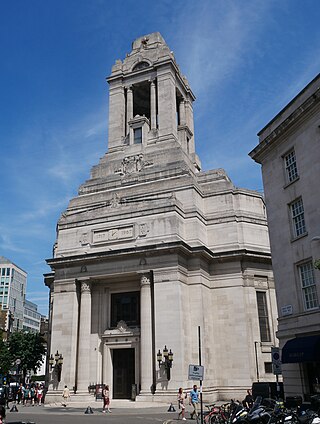
.jpg)
